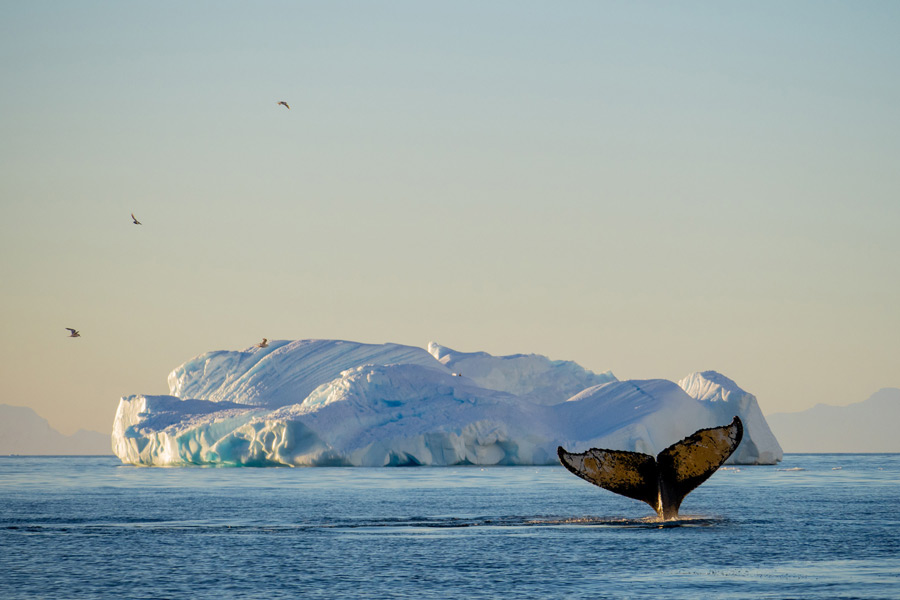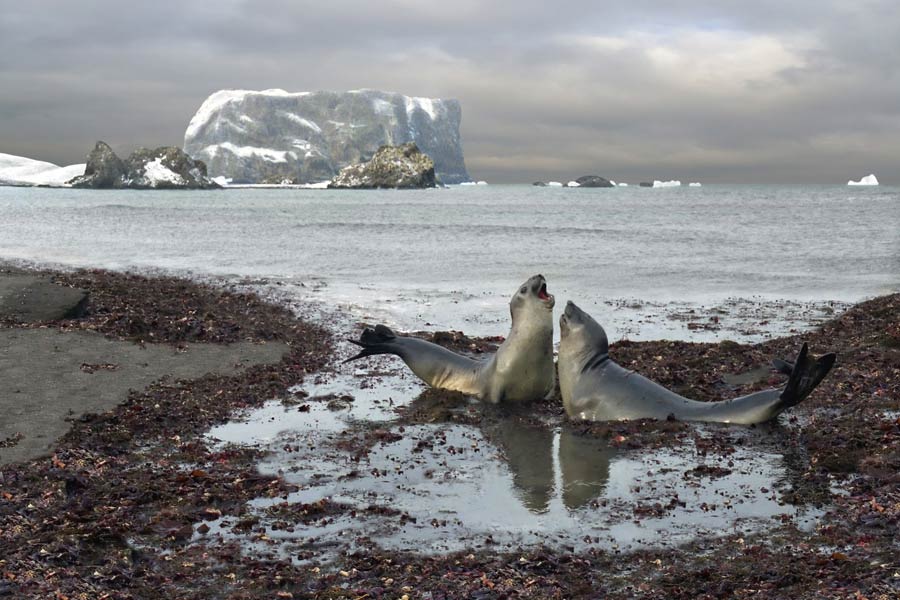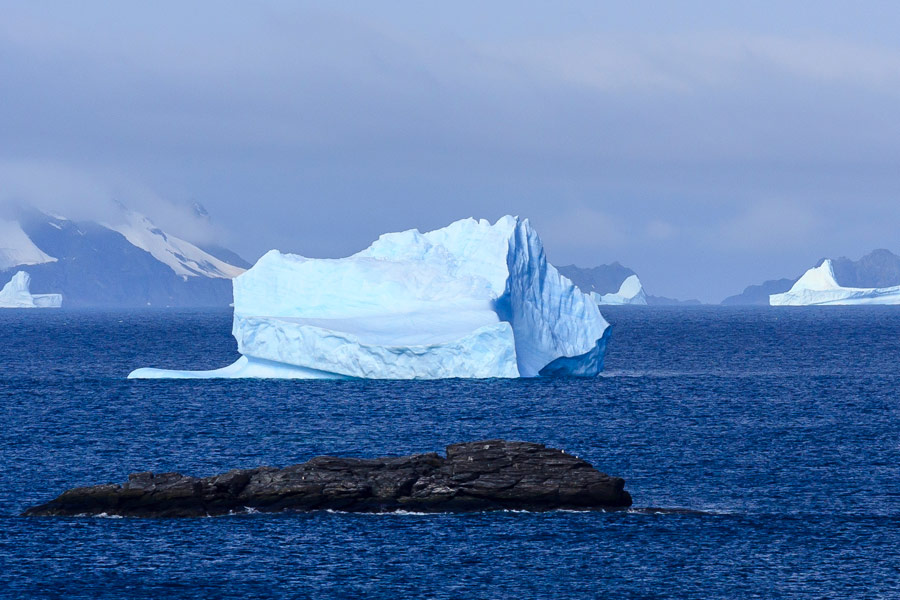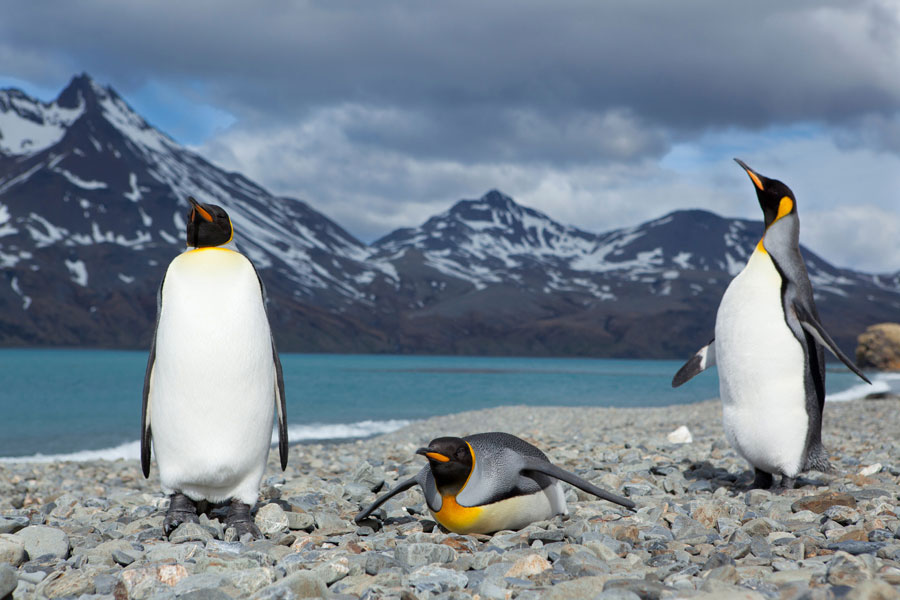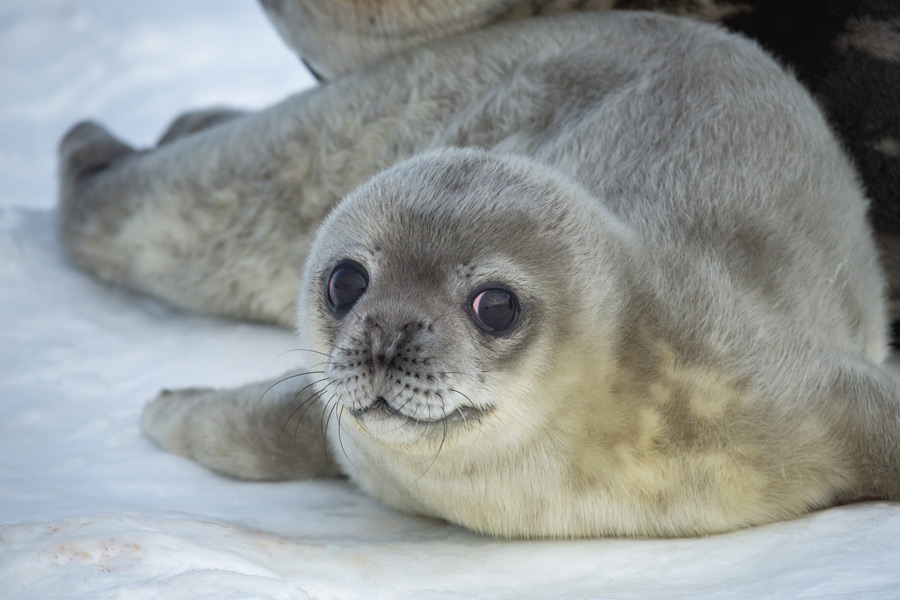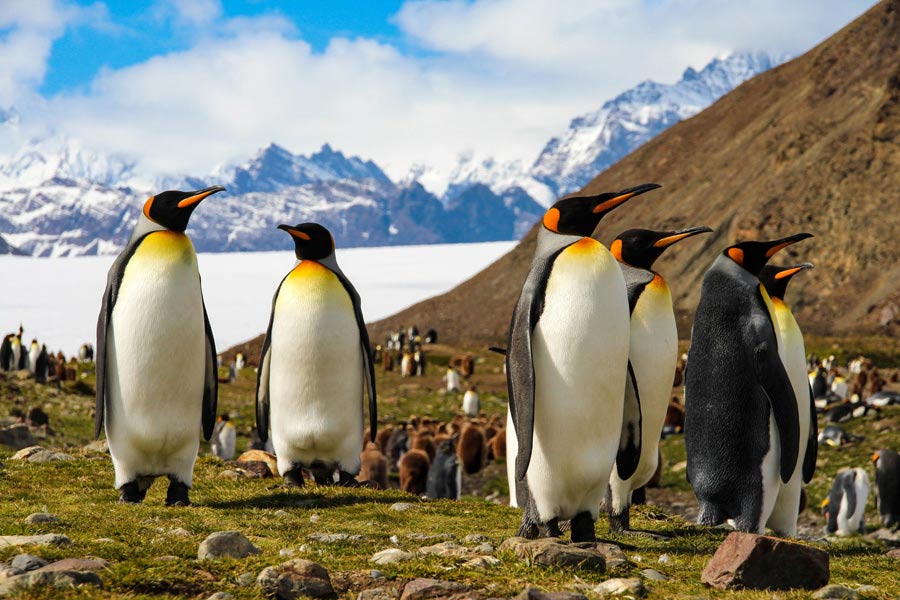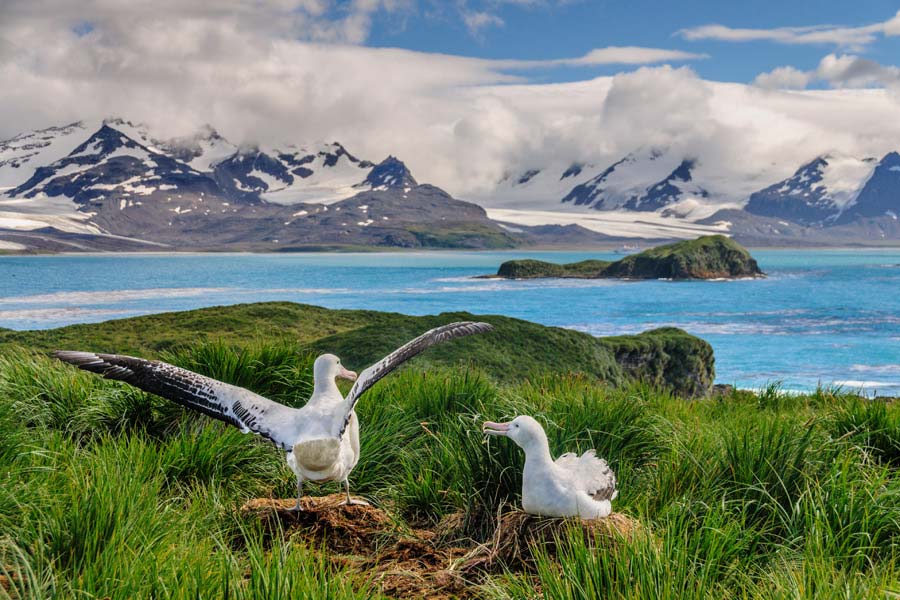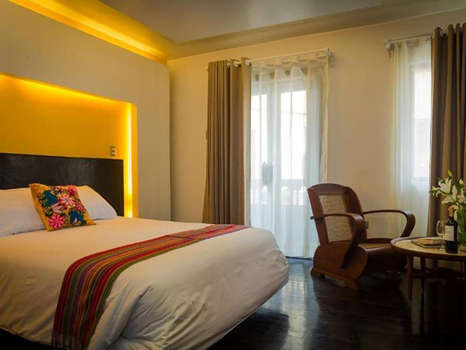Today you arrive at the first South Georgia activity site. Please keep in mind that weather conditions in this area can be challenging, largely dictating the program.
Over the next several days, you have a chance to visit the following sites:
Prion Island – This location is closed during the early part of the wandering albatross breeding season (November 20 – January 7). From January on, the breeding adults have found their partners and are sitting on eggs or nursing their chicks. Enjoy witnessing the gentle nature of these animals, which possess the largest wingspan of any bird in the world.
Fortuna Bay – A beautiful outwash plain from Fortuna Glacier is home to a large number of king penguins and seals. Here you may also have the chance to follow the final leg of Shackleton’s route to the abandoned whaling village of Stromness. This path cuts across the mountain pass beyond Shackleton’s Waterfall, and as the terrain is partly swampy, be prepared to cross a few small streams.
Salisbury Plain, St. Andrews Bay, Gold Harbour – These sites not only house the three largest king penguin colonies in South Georgia, they’re also three of the world’s largest breeding beaches for Antarctic fur seals. Literally millions of these animals breed on South Georgia during December and January, but only during the mid-season do they peak in their breeding cycle. You may also see some young adult elephant seals as well as this seasons "weaners" young elephant seals that have been left to fend for themselves. Watch your step and stay calm when walking the beaches during this time.
Grytviken – In this abandoned whaling station, king penguins walk the streets and elephant seals lie around like they own the place – because they basically do. Here you might be able to see the fascinating South Georgia Museum as well as Shackleton’s grave.
Depending on the conditions, we will start sailing toward the South Orkney Islands in the afternoon of day 11
















